When our little house guest, Kwan asked me if I'd take him to see the aeroplanes, who was I to refuse? So we jumped on the bike for the short, 2km trip up Phahon Yothin Road at the opposite side of Don Mueang Airport to go and see some planes!

If you've ever flown to Don Mueang Airport in Bangkok with your face pressed against the window, either when it was the main International Airport serving Bangkok or in the last 12 years when it has been the secondary airport, you might have noticed that between the runways is a golf course. It blew my mind to see people playing golf at the airport when I first landed there 20 years ago but look more closely, and you'd have noticed that at the opposite side to the passenger and cargo facilities, is the main Royal Thai Air Force base whose offices and hangers line the far runway and as well as being an incredibly sensitive military site, is home to the RTAF museum.
As we drove up there I suddenly wondered how much it was costing. As any visitor will tell you, Thai tourist attractions mostly have a Thai price and a foreigners price. For example, enter a National Park and it costs my wife 30 Baht ($1 USD) but it costs muggins here 400 Baht ($13 USD) so my enthusiasm at any afternoon looking at old planes was wavering slightly as we pulled through the gates in he burning heat of the afternoon sun.
I needn't have worried. Jackpot. No entry fees for anyone. I liked this place already and so we parked up and got our bearings.
Basically there are four main 'sheds' another shed housing a cafe and gift shop and outside, aircraft scattered all over the place. It's not just full of planes though, there are sections on military history, weapons and as a resource for students, a career section and educational resources. It is also the home of the National Aeronautical library so with this much to see, lets make a start...
Hang on, before we do start, instead of me boring everyone to death with swathes of re-hashed info on each exhibit, I'm just going to include a link to wikipedia so you can read up any further information yourself!
We started by wandering around the grounds...

The first thing you see in the car park is this Northrop F-5E and I'm guessing the Air Force must have loved these aircraft due to the fact there were probably about 6 of them in assorted variations around the museum!
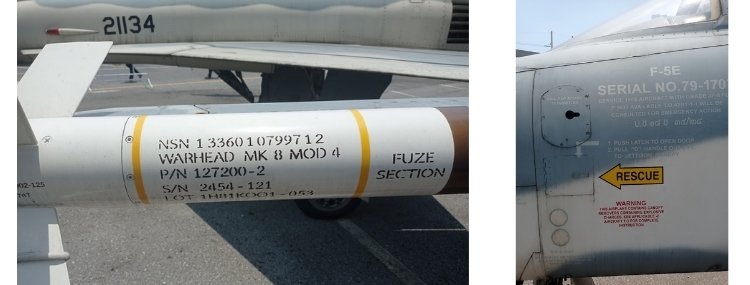
Until I'd got up close and personal with this military hardware, I'd never realised how much 'writing' there was on them. I looked for the little thing to light in the Fuse section on this sidewinder air to air missile!
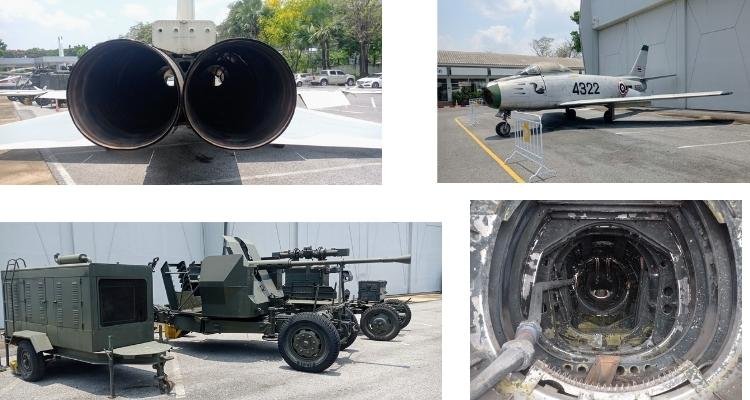
The engines had removed from many of the jets and it was fascinating to see how they run down the full length of the fuselage. The mobile guns seemed in remarkably well kept condition!

I've mentioned before how Thais don't like throwing stuff away and so it appears to be true for the Air Force too. There must have been one example of every model they've ever flown and this is just the museum. Go to any airport or air force base and there are always old aircraft proudly displayed outside!

I have absolutely no idea what this was but it was well dodgy. One of the problems with the outdoor exhibits is that very few of them had an information board.

This is a Douglas C-47 Skytrain more commonly known as a 'Dakota' and I love these aircraft. Sadly, it was closed so we couldn't walk through it!
It was getting a bit hot to be outside so we wandered into the Helicopter shed...

Right in front and taking pride of place was the helicopter used for royal duties and even flown by King Rama IX himself. I was actually more impressed by what was undoubtedly the most shiny floor I'd ever seen in my life! Watch out for a cropped version of this photo appearing in a Hive 'reflections' contest in the near future!
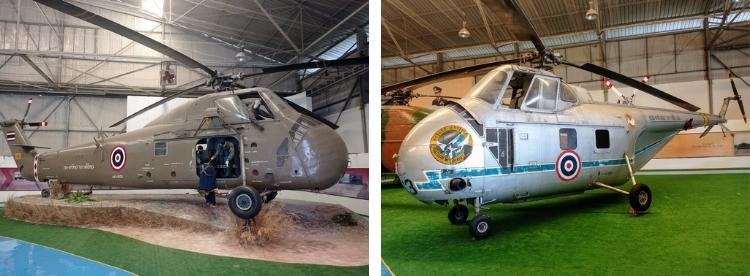

This is a really odd beast. The Kamen 'Husky' HH-43 has a pair of intermeshing rotors which means it doesn't need a tail rotor for stabilisation. No idea how that works exactly but I'm sure someone in the Stem community could explain.

No idea what this is but it looks like it was built by some Indian kid in his back yard because he has dreams to fly!
On the way to the Virtual Reality shed we just happened to pass a Thai Air Force Boeing 737-200 which was the biggest aircraft on display...

...and was also sadly closed...

... but this one you could. So we did!

Still trying to reach the Virtual reality shed, we passed a couple of (what I thought were) really interesting beasts that I hadn't ever seen in the flesh before...
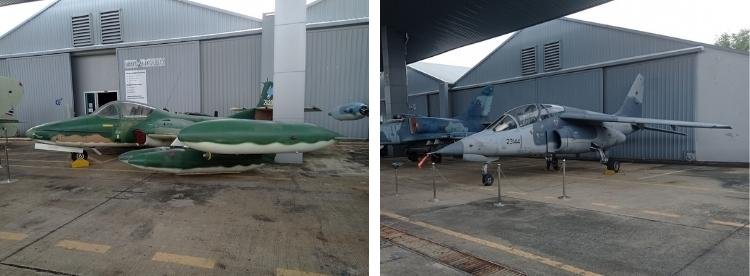
On the right we have Dornier Alpha Jet A and on the left, a cold war, Czech designed and built Aero L-39 ZA/ART which was an updated version using Israeli avionics.

Kwan was getting impatient, he wanted the VR shed and wasn't hanging around!

There was a lot of weaponry and equipment on display
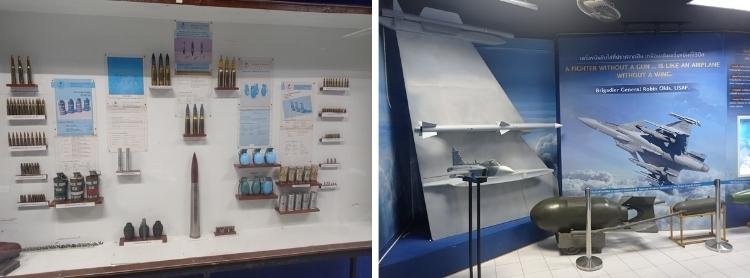
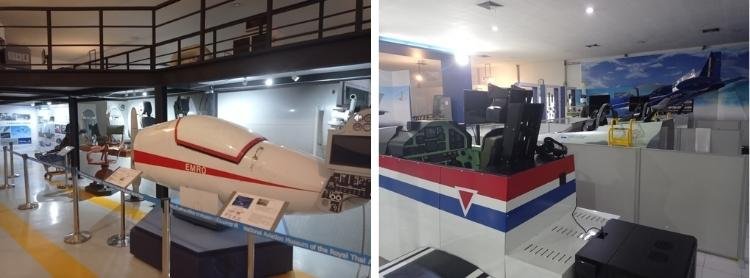
It was a great shame that instead of being able to play with simulators and 'virtual reality', we had the actual reality that everything was closed. It's the school holidays and normally, this building also houses career workshops and gives seminars and classes on engineering and aviation for schools.
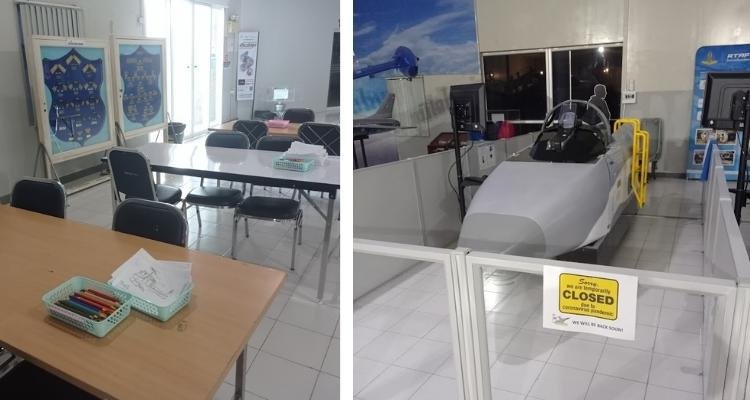
Colour in a picture of a helicopter or play in the fighter jet simulator?

A 'flying by instrument' training machine which looked as though it had seen better days!

This is a hyperbaric chamber in which pilots are trained to deal with the effects of hypoxia caused by a lack of oxygen that can happen during decompression. It appeared to be fully functional and still used. I can't imagine a museum in the UK locking a load of kids in one on a school trip and reducing their oxygen supply until they start writing like a spider on acid before passing out!
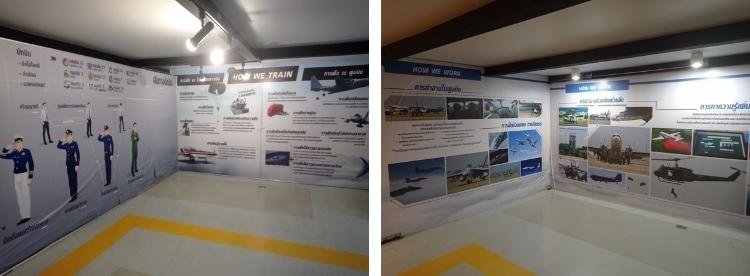
Join the Air Force!
After deciding the Air Force must be a bit shit if it was like their museum and nothing worked, Kwan and I wandered out of the Virtual Reality Shed to the main museum hall...

...past the nice light blue jet with the point at the front that was perfect for taking an 8-year-old's eye out...

...stopping briefly to take in the sleek beauty that is a Supermarine Spitfire which the Thai Air Force bought second hand from the Brits between 1950 and 1954, 5 years after WWII had ended and 2 years after production had stopped. I would hazard a guess and say that this was in part due to reparations from their part in cosying up to the Japanese during the war...

... past another great Brit. The Harrier jump-jet, before arriving in the viciously air conditioned sanctity of the main halls.
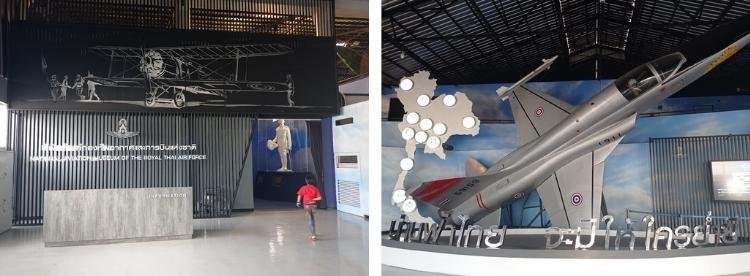
Kwan rushing ahead and having a little back scratch! The words on the picture on the right say "Protecting Thai skies from enemies."
This main hall was very well laid out and chronographically told the history of the Thai Air Force from its inception to the current time.


In all seriousness, I thought this display about the different types of wood and their uses in aircraft construction was really interesting and a little bit different.

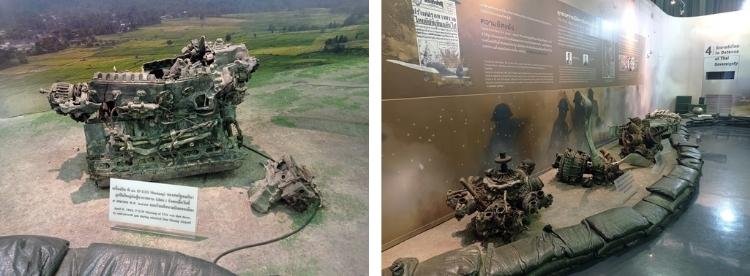
Proudly displayed were the remains of a USAF P51 Mustang that was shot down by anti-aircraft guns during an attack on Don Mueang Airport in 1945.


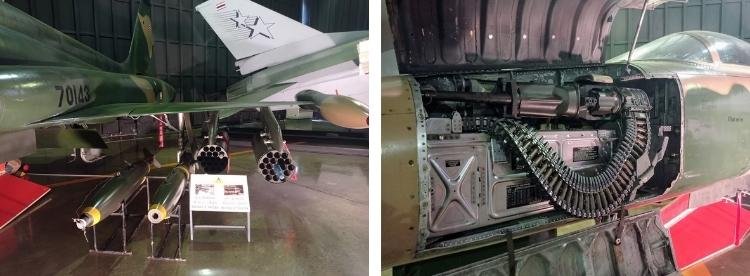
This was fascinating. A fully armed Northrop F5 showing the Machine gun lockers and ammunition storage which I hadn't seen before but often wandered how it worked.
This brought us right up the modern day and the Air Force's current fleet of fighters, the General Dynamics F16 and Saab Grippen.


The Saab Gripen 'C' of which the Thai Air Force are very proud of and can often been seen from my house taking off and landing at Don Mueang in between the Air Asia Airbus A320s!
Through an airline mock-up and a double set of doors and past the closed National Aviation History Library and we were in the final hall.
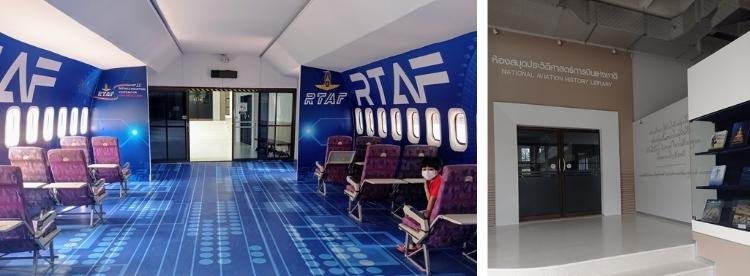
The final hall combines some static displays, a history of aricraft engines from the oldest combustion engines to the latest jet technology and a display of historic memorabilia and uniforms.
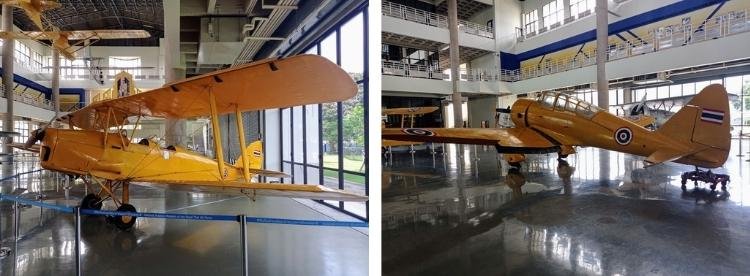
The DH.82aTiger Moth was fabulous. If you reached inside and moved the joystick, all the control surfaces still moved and although they are all controlled by wires rather than hydraulics, were very easy to move.


Upstairs, amongst the glass display cabinets, which as it turned out don't photograph very well due to the reflections of the glass, were some medals for gallantry, and if you've got this far in this huge and rather dry post, I will award you one too...

Arise my friends, for you are now all members of 'The Most Exalted Order of the White Elephant! I wonder if they realise, that in the UK at least, a 'White Elephant' means 'something that is useless or troublesome'!
What I loved about the place was that there were very few 'Do Not Touch' signs and it was a very tactile museum. If you wanted to stroke a 'sidewinder' you could. If you wanted to get up close and personal and examine every minute detail of the displays, that wasn't a problem.
It was also very interactive but sadly, the simulators and some of the exhibits were closed due to the ongoing Covid restrictions.
What I took away was the engineering and how totally mechanical aviation was, and most likely still is despite all the computers and electronics we have these days.

Pilots back in the day must have had balls of steel knowing one mistake meant likely death. Next time I'm on an airliner, I will certainly have more appreciation for the guys sitting up front!
As I mentioned, some of the 'history' was a little iffy but that's the Thai style, and I'm used to it but overall, a fantastic morning or afternoon out and with the BTS station of the same name right outside the gates now, very easy to get to from downtown.
Strangely, when we were there, although just a few visitors, most of them were foreigners, wandering around in a state of shock at the fact they didn't have to pay!
In all seriousness, if you have any interest in history and aviation, it's unmissable and a fantastic place to visit for Thais and foreign tourists alike. When everything has fully reopened, I am sure we will be back!
Finally, unlike the cafes and restaurants at tourist attractions in the UK, the food and drink here were exactly the same prices as you'd find outside on the street...

... whereas exactly like the UK, the gift shop was full of overpriced tat!...










